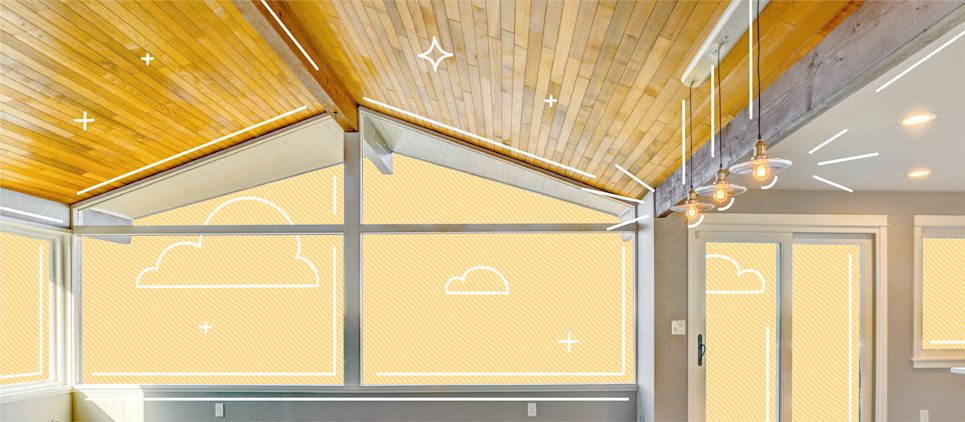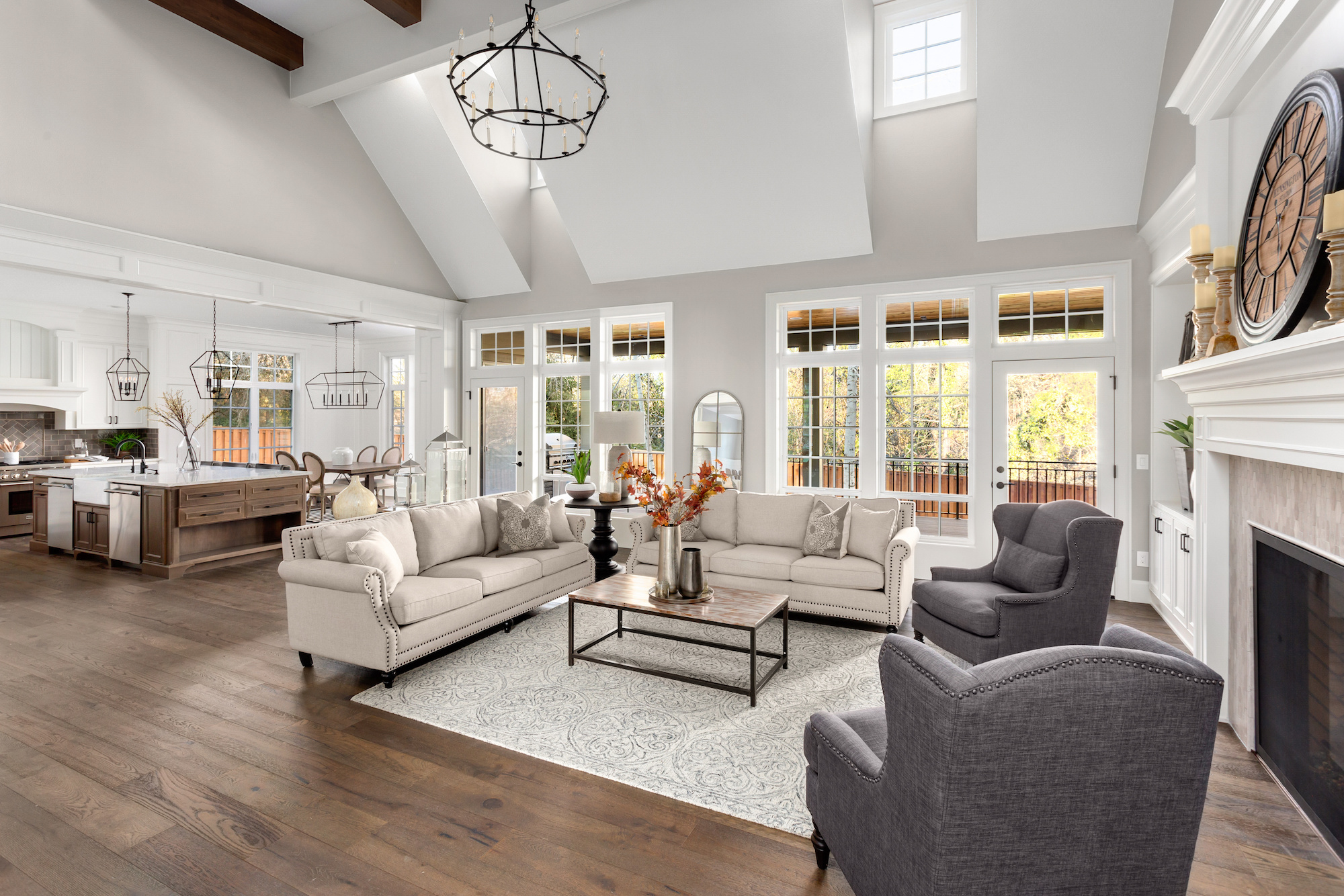What is a vaulted ceiling?
One major perk of coliving with roommates is that your collective rent can buy you access to a more spacious apartment, or even a house with features that just aren’t that common in smaller apartments (hello, in-unit laundry and storage). When you’re checking out potential pads, try looking up: Rooms with higher ceilings can help you feel less boxed-in, add character, and create more natural light. But as is the case with any design feature, there are pros and cons. Here’s a quick guide to vaulted ceilings.

Table of contents
What is a vaulted ceiling?What types of spaces commonly utilize vaulted ceilings?5 Types of vaulted ceilingsAdvantages of vaulted ceilingsDisadvantages of vaulted ceilingsWhat is a vaulted ceiling?
A typical flat ceiling is eight- to 10-feet high. A vaulted ceiling, on the other hand, extends into the space between where a ceiling would normally sit and the top of the roof. Some designers use the terms “vaulted ceilings” and “cathedral ceilings” interchangeably, but there is a technical difference: A cathedral ceiling is typically not arched, instead following the pitch of the roof, while a vaulted ceiling incorporates an arch design within the triangular pitch of the roof.
What types of spaces commonly utilize vaulted ceilings?
Since vaulted ceilings add an air of grandeur and design to a space, they are often used in areas of the home that would be seen by guests, such as a living room or dining room. A barrel vaulted ceiling is a great choice for a hallway, while a cathedral ceiling can create a dramatic “great room” effect in a combination living and dining room. Because domed ceilings are more difficult to achieve, they’re often used for smaller spaces like foyers and studies.
5 Types of vaulted ceilings
There are a few architectural design distinctions within the world of vaulted ceilings.
Barrel Vault: Just like it sounds, a barrel vaulted ceiling is defined by a round, semicircular arch jutting into the vaulted space, creating a tunnel-like effect.
Groin Vault: Groin vaults are created by intersecting two barrel vaults so that they form a square unit with a point in the center of the ceiling. The edges between the intersecting vaults are referred to as the groin.
Rib Vault: A rib vault looks very similar to a groin vault, but it is actually constructed using a series of arched, diagonal strips, or ribs, to ensure durability and flexibility.
Fan Vault: A fan vault is, in turn, similar to the rib vault, but made of many smaller, equidistant ribs that fan out from their support beams across the length of the ceiling.
Dome Vault: Often seen in entryways and smaller rooms, a dome vault is created by recessing a dome into the ceiling. Architecturally speaking, this is difficult to pull off in larger rooms.

Advantages of vaulted ceilings
When it comes to interior design, it’s important to think about function as well as form—and raised ceilings offer both.
Rooms with vaulted ceilings look grand and expensive—an exposed beam can make your living room look like a ski lodge in the best way.
High ceilings can help a small space look bigger.
In a city like New York where buildings are placed right next to each other, skylights or other windows embedded in vaulted ceilings can help bring in natural light.
Since hot air rises, vaulted ceilings can help create a breezy coolness.
Disadvantages of vaulted ceilings
While a vaulted ceiling might look like your perfect aesthetic solution, it could be a pain for other reasons.
The physics of hot air rising can also make it more difficult and expensive to heat a room with high ceilings in the winter, or cool it in the summer.
It can be harder to reach ceiling fans, light fixtures, and other design elements that might need adjustment or cleaning.
Because a vaulted ceiling can create an airy, ostentatious vibe in a room, it’s more difficult to feel cozy in a room with a high ceiling.
Certain types of vaulted ceilings require a special roof structure or supporting arches to ensure structural integrity; in short, they can be expensive to build.
It can be tricky to find a home that fits your aesthetic standards as well as meeting your logistical needs. But rooms with higher ceilings can help give your home some added style, better airflow, and even create more natural light. But, as with any home design element, they can also be less cost-effective and less environmentally friendly. So be sure to weigh the benefits and drawbacks when considering whether to close the deal on a place with a vaulted ceiling.
Bungalow is the best way to live with roommates. Our homes are designed for shared living, located in the best neighborhoods, and take care of the details—like furnishing common spaces, scheduling monthly cleanings, and handling payments. Whether you already have roommates or are looking for new ones, there’s a Bungalow with your name on it. Find your Bungalow.
Ready to find your next home?
Move-in ready homes and a built-in community so you can feel at home, together — wherever you are.
Suggested articles



